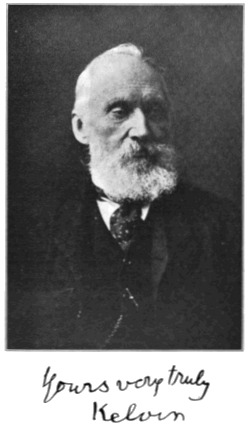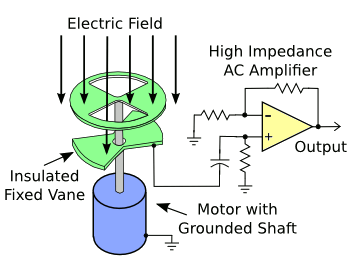
Kelvin and Atmospheric Electricity
June 19, 2013 William Thomson (1824-1907), also known as Lord Kelvin, was a British physicist. Kelvin is best known for determining that -273.15 Celsius is the value of absolute zero on the temperature scale. For this work, we've electrician, Michael Faraday, showed that the data rate of such cables diminished with length. The cause of this was the distributed capacitance of the cable, where the cable conductor and the sea water act as plates of a capacitor for which the cable cladding was the dielectric. Kelvin rightly saw that a reduction in cable resistance by using a larger diameter conductor, and a reduction in the capacitance by using thicker insulation, would improve the data rate, The modern solution to this problem, before the invention of electronic amplifiers, is the dispersal of loading coils along the length of the cable. These are inductors that balance the cable capacitance. In the cable's original state, the only solution was a very sensitive detector, the mirror galvanometer. Even with that, the data rate was excruciatingly slow. A recent arXiv paper by Karen Aplin of the Physics Department, Oxford University, and Giles Harrison of the Department of Meteorology, University of Reading, recalls another of Kelvin's scientific interests; namely, atmospheric electricity.[1] The electrical potential increases with altitude above Earth's surface by a surprisingly high value, 100 volts per meter (30 volts per foot), increasing with the approach of thunderstorms. So, why aren't we all walking around in a frenzied and perpetual bad hair day? The voltages may be high, but the currents, which are carried by a few ionized molecules in the air, are very small. We can only see such potential differences if we have a really high impedance voltmeter, or an electrometer.[2] One of the most common such field measuring devices is the field mill, which combines an electrostatic shutter and an alternating current amplifier, as shown in the figure. Since alternating currents are easier to amplify than direct currents, a motor periodically shields the sensing electrode from the Earth's field. Not surprisingly, a MEMS field mill was demonstrated more than a decade ago.[3] electronics for his studies. The first practical amplifier, Lee de Forest's Audion, wasn't invented until 1906. As one who commonly jumped from one physics area to another, Kelvin discontinued his atmospheric electrical studies just two years later, in 1861.[1] Although the existence of an atmospheric potential, even in fair weather, was know for many decades before Kelvin's time, he was the first to offer quantitative data.[1] Kelvin invented a novel water spray electrometer for measuring the atmospheric potential gradient; and, for his time, the extremely novel use of photography as a means for data logging. Rather than measuring the potential of the air, directly, Kelvin's water spray electrometer measured the potential of an insulated tank spraying water into the air. The potential of the tank equilibrates to that of the air at the altitude where the water spray become droplets that are no longer electrically connected to the tank. The water tank equilibrates to this potential because of charge transfer by the water drops.[1] The equilibration occurs since any potential difference between the tank and the air will transfer charge to, or from, the water tank, which acts as a capacitor. You can calculate all this from the list of capacitor equations in a previous article (Carbon Nano-Onion Supercaps, August 26, 2010). Kelvin's water spray electrometer, as illustrated in his notebook schematic, below, included photographic recording of the data from the mirror electrometer, and a battery reference. In the figure, B = battery, C = driving clock for the data recorder, D = a cylinder coated with a photosensitive medium, M = electrometer mirror (illuminated by a gas light), and I = Insulators. | Kelvin's water spray electrograph. A portion of Fig. 2 of Ref. 1, modified for contrast, via (arXiv.)[1] |
References:
- K. L. Aplin and R. G. Harrison, "Lord Kelvin's atmospheric electricity measurements," arXiv Preprint Server, May 23, 2013.
- Chapter 6, "Instrumentation And Measurements," from Lars Wåhlin, "Atmospheric Electricity," Research Studies Press, John Wiley & Sons (New York, 1989), ISBN 0-471-91202-6.
- Mark N. Horenstein and Patrick R. Stone, "A micro-aperture electrostatic field mill based on MEMS technology," Journal of Electrostatics, vols. 51–52 (May 2001), pp. 515-521.
- Chapter 6, "Instrumentation And Measurements," from Lars Wåhlin, "Atmospheric Electricity," Research Studies Press, John Wiley & Sons (New York, 1989), ISBN 0-471-91202-6.

